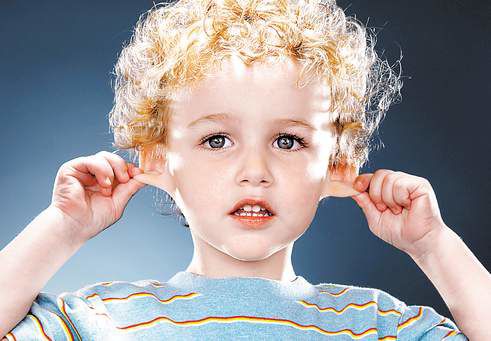Your kid swallowed what? How to remove stuck objects
Published 5:00 am Friday, May 27, 2011

- A toddler who complains of discomfort or a “plugged” feeling in an ear may have stuck something in there.
If your child stuffs something into his ear, be sure to check the other one. There’s a good chance you’ll discover another unexpected treasure, said Dr. Christopher Hampson, an ear, nose and throat specialist, who recently discovered some pebbles in a young patient’s ear. When Hampson peeked into the other one, he discovered a crayon.
The boy, naturally, blamed it on his puppy.
“Kids rarely fess up to putting something in their ear so you have to check carefully,” said Hampson.
Grapefruit seeds, pins, Lego ninjas, plastic beads and button batteries: There’s no end to what a curious child will jam into an orifice in the name of scientific experimentation.
Button batteries which rapidly corrode and leach chemicals, can be serious. Other objects, like the 40-cm long piece of dental floss swallowed by a toddler, resolve naturally.
Here’s what to look for and whether to panic, should you discover a foreign object lodged in your child:
Nose
Age range: Toddlers through 5 or 6.
What goes in: Peas, beans, blueberries and other foodstuffs. Hampson has retrieved magnets, Legos, plastic toys and a squishy rubber ball, an inch in diameter.
Look for: Foul-smelling discharge from one nostril. Kids might stick one magnet in one side of the nose and one in the other, hooking up in the nasal septum, Hampson said. “If the magnets are squeezing tight against the tissue the blood can’t flow and the tissue dies.” Stuck objects can go unnoticed for a long time — years in some cases — because kids often don’t complain.
Treatment: If you can see it, try to remove it with blunt-end tweezers, said pediatrician Bob Sears, co-author of “The Portable Pediatrician.” Parents can encourage nose blowing or try to induce sneezing by rubbing fresh ground pepper in front of the nose, he said. Or try to “steam clean” the nose. “If the object is water-soluble, such as a piece of candy, take the child into the shower; the humidity will help loosen the secretions that plug the nose,” Sears said. “Or squirt some saltwater (or saline nose drops) up into the nostril to soften the object and reduce its size.”
If this fails, head to the doctor but “don’t let your child lie on his back or fall asleep with a foreign object in his nose since it may be aspirated into the lungs,” Sears said.
Ears
Age range: Toddlers through 5 or 6.
What goes in: Food, bugs, pencils, beads.
Look for: You child may start complaining of discomfort, a “plugged” feeling or draining from the ear. But there may be no sign: As a 4-year-old, Christianna Smith of Ashton, Idaho, once stuck a mancala bead into her ear. The doctor found it during a visit for a sore throat.
Treatment: Objects in the ears are generally not emergencies, said pediatrician Ari Brown. “They cannot move in the ear canal as the eardrum prevents the object from heading into dangerous territory in the middle or inner ear.”
Parents can try flushing the ear with a syringe or the shower stream, but shouldn’t insert tweezers or any instruments into the ear,” added Sears. “The only exception to rinsing is that dried beans or peas can expand when they get wet, so water shouldn’t be used in those cases,” said Sears.
Mouth/throat
Age range: 1 to 3 years.
What goes in: What doesn’t? Food, pen caps, dried dog feces, sticks, coins, small batteries, screws, little plastic pieces, Legos and Colorforms
Look for: Parents don’t witness an estimated 40 percent of the ingestions. “Signs include painful swallowing, inability to swallow and the feeling that an object is stuck there,” Sears said. If a child can eat and drink normally and doesn’t have any pain, the object has probably passed into the stomach, rendering it harmless, Sears said.
Treatment: “Swallowed objects are an issue if a child is drooling, gagging, or unable to breathe or swallow,” said Brown, the author of the “Baby 411” and “Expecting 411” series. “And certain objects always need to be evaluated by a doc — anything a quarter size or bigger, button batteries and sharp objects.” Batteries can leak acid, and two or more magnets can stick to each other through the walls of the small intestines, possible causing an emergency intestinal blockage, said Sears.






